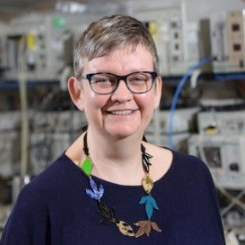CNS Injuries
A special issue of International Journal of Molecular Sciences (ISSN 1422-0067). This special issue belongs to the section "Molecular Neurobiology".
Deadline for manuscript submissions: closed (28 February 2023) | Viewed by 57007
Special Issue Editors
Interests: neuroscience; aquaporins; blood-brain barrier (BBB); neurodegeneration; organ-on-a-chip; glia; astrocytes; trumatic brain injuries (TBI); stroke; stem cells; spinal cord injuries; glymphatic system
Interests: aquaporins; membrane transport; water homeostasis; blood-brain barrier (BBB); edema
Special Issue Information
Dear colleagues,
CNS injuries including stroke, traumatic brain injury (TBI), and spinal cord injury are among the most common causes of disability and death worldwide.
There is a clear and unmet clinical need to identify new drug targets, biomarkers, and therapeutics for CNS injuries. Understanding the injury and molecular mechanisms of injury, recovery, and neuroprotection is important to launch new effective therapies; however, despite ground-breaking developments in basic and fundamental research, there is a severe lack of effective therapeutics for the treatment of CNS injuries and prevention of long-term consequences.
In this Special Issue, we welcome the submission of research articles, short reports, case studies, and traditional reviews. The issue is a forum for scientific communications, evidence-based discussion, opinions, and perspectives on the latest advancements in the science of CNS injuries. We particularly encourage the submission of reports on molecular mechanisms, genetics, proteomics, metabolomics and biomarkers, studies of therapeutic interventions and re-purposing of drugs, CNS drug delivery, studies that address the use and limitations of current preclinical animal models, and recent advances concerning in vitro and organ-on-a-chip models. We will also consider submissions regarding early and late medical complications in CNS injuries (brain and spinal cord edema, impaired energy metabolism, neurodegeneration, neuroinflammation, deep vein thrombosis, pulmonary embolism, infections, etc.)
This Special Issue will summarize what has already been achieved and the discoveries, approaches, and technical developments that can open up the doors to better care for CNS injuries.
Dr. Mootaz Salman
Dr. Philip Kitchen
Prof. Dr. Roslyn M. Bill
Guest Editors
Manuscript Submission Information
Manuscripts should be submitted online at www.mdpi.com by registering and logging in to this website. Once you are registered, click here to go to the submission form. Manuscripts can be submitted until the deadline. All submissions that pass pre-check are peer-reviewed. Accepted papers will be published continuously in the journal (as soon as accepted) and will be listed together on the special issue website. Research articles, review articles as well as short communications are invited. For planned papers, a title and short abstract (about 100 words) can be sent to the Editorial Office for announcement on this website.
Submitted manuscripts should not have been published previously, nor be under consideration for publication elsewhere (except conference proceedings papers). All manuscripts are thoroughly refereed through a single-blind peer-review process. A guide for authors and other relevant information for submission of manuscripts is available on the Instructions for Authors page. International Journal of Molecular Sciences is an international peer-reviewed open access semimonthly journal published by MDPI.
Please visit the Instructions for Authors page before submitting a manuscript. There is an Article Processing Charge (APC) for publication in this open access journal. For details about the APC please see here. Submitted papers should be well formatted and use good English. Authors may use MDPI's English editing service prior to publication or during author revisions.
Keywords
- Stroke
- TBI
- Brain edema
- SCI
- Spinal cord edema
- Neuroinflammation
- Neurodegeneration








